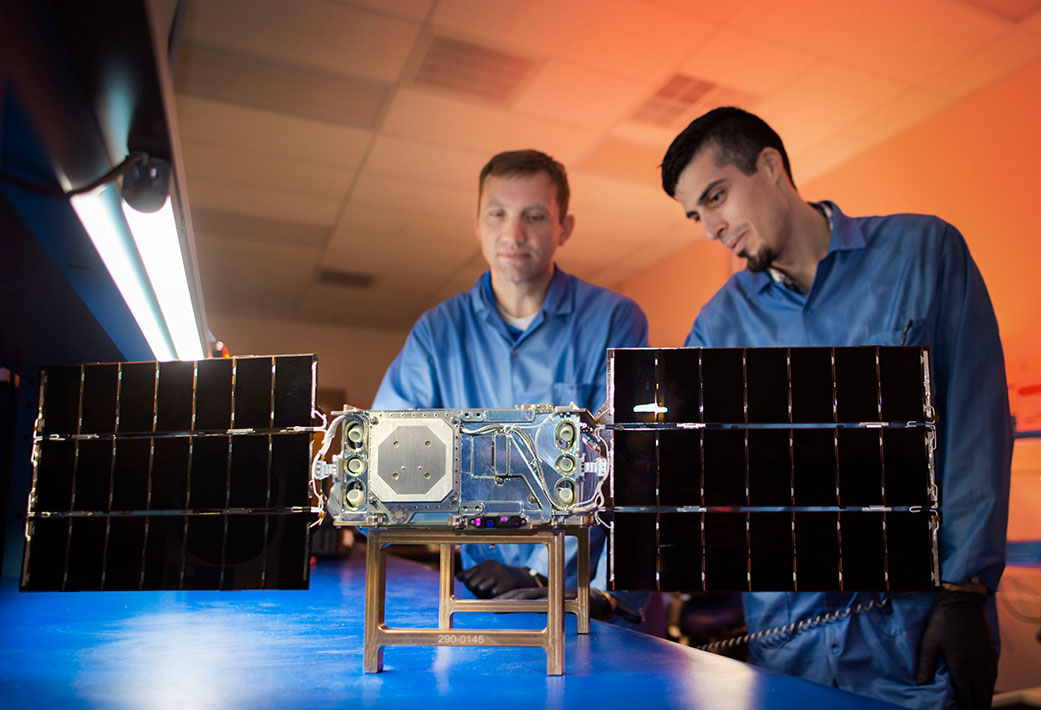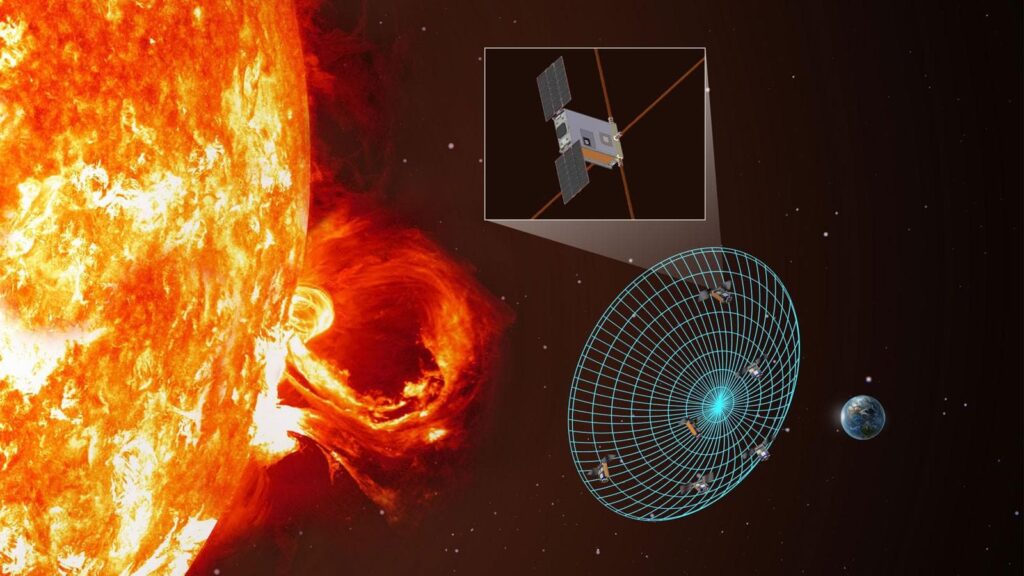NASA has completed the construction of the first of six SunRISE mission satellites. Once deployed, they will create the largest radio telescope ever launched.
SunRISE Mission Objectives
The SunRISE (Sun Radio Interferometer Space Experiment) project was approved in 2020. It involves the creation of a huge virtual radio telescope designed to monitor dangerous space weather phenomena. The main purpose of the mission will be to study bursts of radio emission from the Sun, which precede flares, coronal mass ejections and other manifestations of its activity.

The SunRISE constellation will consist of six small devices based on the Cubesat (6U) platform. They will be placed into a geosynchronous orbit located at a distance of 36 thousand km from Earth and then deployed into a formation with a distance of 10 km between neighboring satellites.
The largest space radio telescope
Each of the SunRISE cubesats will be equipped with four retractable telescopic antennas approximately 2.5 meters long. They will record radio pulses in the range from 0.1 MHz to 25 MHz. Using the interferometry method, scientists will combine their signals to create a virtual radio telescope with an aperture which width will be equal to the distance between the most distant small satellites — about 10 km.

Previously, this method was used for observations made by ground-based radio telescopes. But SunRISE satellites will have a unique advantage over them: they will be able to capture long radio waves that are blocked by the earth’s ionosphere. This will make it possible to make three-dimensional maps that will make it possible to determine where emissions of charged particles occur on the Sun and the dynamics of their propagation in outer space. In turn, scientists will be able to better understand the mechanism of occurrence and acceleration of these flows, which will increase their ability to predict solar activity events.
It is assumed that SunRISE will work together with other space missions such as the Parker probe. This will make it possible to see how the particles of the solar wind are accelerated. And by combining SunRISE data with observations from the SOHO Observatory, scientists will be able to identify the relation between different types of coronal mass ejections, the radio bursts they create and the number of particles arriving in the vicinity of the Earth.

SunRISE satellites will be launched into space as a passing cargo on a commercial spacecraft built by Maxar. The launch of the mission will take place no earlier than April 2024 and no later than September 2025. The total estimate of the project is estimated at USD 62.6 million.
According to https://www.nasa.gov
Follow us on Twitter to get the most interesting space news in time
https://twitter.com/ust_magazine
